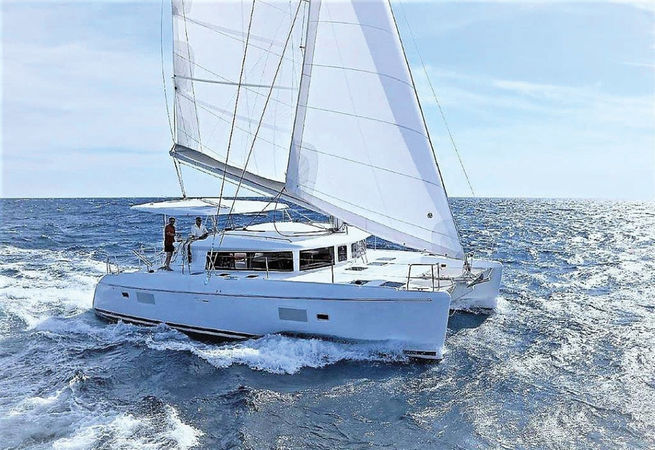
Issue #: SP18
Published: September / October 2022
- Price per issue - digital : 7.90€Digital magazine
- Price per issue - print : 11.90€Print magazine
- Access to Multihulls World digital archives Digital archives
On the models you see at boat shows and in the manufacturers’ catalogs, electric motors are now very much in evidence. The general acceptance of this clean propulsion system is clearly under way... What about the performance of such systems? Are electric motors reliable and how can they be supplied with energy? Is it possible to do away with fossil fuels altogether? Our investigation provides some answers.
Fact: the 10,000 hours of operation of a diesel engine (one could argue double that for a catamaran) is the main source of pollution in the life cycle of a multihull. Switching from internal combustion to electric power is therefore the most virtuous and effective way to check the green box.
Diesel/electric technology is not new – loads of railroad locomotives as well as ships have been equipped with it for decades. There was even a submarine propelled in this way, as far back as... 1860!
New lithium/ion batteries, that are much more efficient and lighter than lead batteries, have made it possible to offer a buffer energy reserve that allows the generator to be left switched off for a while, or even to do without it. But for now, this available energy is only equivalent to a quart or half a gallon (1 to 2 liters) of gasoline for small removable batteries, and 2½ to 10 US gal (10 to 40 liters) of diesel for larger battery banks built into cruising multihulls.

Launched in 2006, the Lagoon 420 was the first attempt to commercialize a massproduced sailboat that featured hybrid propulsion.
For the past twenty years, boats powered by electric motors have flourished on numerous inland waters and rivers. Small outboards have also proven to be perfect for fishing lakes. But from there, to equip an ocean-going multihull... Well, there have been a few isolated attempts by individuals to electrify their model, notably the launch of the diesel-electric hybrid Lagoon 420 in 2006. The builder produced about a hundred examples - at the same price as the internal combustion equivalent - before offering its customers traditional diesel blocks. Technologically speaking, it was too soon. The focus back then was on comfort, with beamy hulls and big displacement, and the significant windage limited motor cruising speeds to 6 knots. By 2017, Michael Köhler was undoubtedly the most knowledgeable man in electric propulsion: after 6 years of testing, he launched the Solarwave 64. The reception of this catamaran that was entirely covered with solar panels and devoid of a rig was mixed. In hybrid mode, it only offers 24 hours of autonomy at a cruising speed of less than 8 knots, making a range of less than 190 nautical miles. In solar/electric mode, the Solarwave 64 is still capable of motoring non-stop at 4 knots - the catamaran even managed to cross the Atlantic, a first. In 2017, Boyd Taylor launched his new sustainable brand, Serenity Yachts. The Serenity 64 was followed by the 74 and soon the impressive 84. Michael Köhler, meanwhile, set about launching a 55-foot electriccat and then creating his new Silent Yachts brand in 2019 – we’ll come back to that a little later. At the same time, electric motor manufacturers Oceanvolt and Torqeedo were starting to equip cruising boats such as the ITA 14.99 for the former and a Gunboat for the latter. Fountaine Pajot launched a Lucia 40 hybrid prototype. Finally, it was last year’s Cannes ...
What readers think
Post a comment
No comments to show.